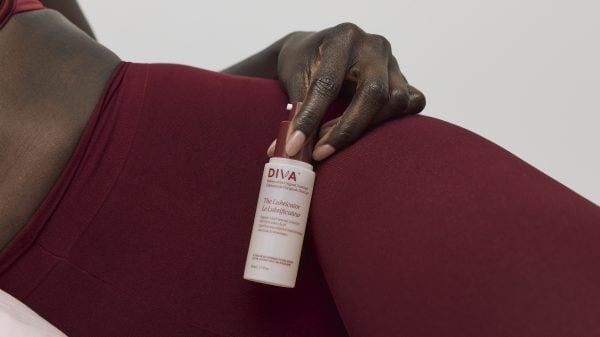On this week’s episode of Let’s Talk About…, Elise sits down with co-host Sarah Joseph to talk about toxic positivity.
Sarah is a certified emotional intelligence coach whose mission is to help you get comfortable with your emotions and master them to live a more purposeful life. She understands how our lack of emotional management can impact the longevity of our relationships and can inspire our emotional healing by plugging into our most powerful tool, the Mind. Her philosophy is that our emotions show up in every aspect of our lives and it’s your right to learn how to manage them effectively to your advantage.
On this week’s episode, Elise and Sarah talk about what is toxic positivity, why we engage in toxic positivity, becoming more emotionally empathetic, avoid toxic positivity when you’re on the receiving end, and expressing our needs.
“The reason some of us engage in toxic positivity without even realizing it, is because we’re also unaware of how to be empathetic and connect towards ourselves when we’re going through a difficult situation..” Sarah tells Elise on Let’s Talk About.
Check out our show’s full transcript below.
[00:00:00] Elise: Hi everyone and welcome. This week we’re continuing our series on emotional Intelligence with emotional intelligence coach Sarah Joseph. Hi Sarah.
[00:00:08] Sarah: Hello. How are you today?
[00:00:10] Elise: I’m good, thanks. How are you?
[00:00:12] Sarah: I’m doing good and excited for today’s topic. Yeah.
[00:00:15] Elise: So today let’s talk about toxic positivity. Mm-hmm. So that’s our, that’s our, um, like headliner for today. And I think a really interesting topic. Definitely more of a, like a buzzword re or a buzz phrase, I guess, or a buzz concept, if you will, really in the last like probably couple years.
[00:00:36] Sarah: I would say that, yeah, in the past couple years it’s been really coming. It’s been really up and coming.
[00:00:40] Elise: Yeah, up and coming. There you go. It’s like a new trend. Toxic positiv. Cause I feel like there was, if you think of just the general, you know, if you think of over the last call it even five to 10 years, there was almost like a push for positivity.
And now this is like the backlash of positivity.
[00:01:00] Sarah: Yeah. I feel like this topic is definitely somewhere where you have to play in the middle ground. It’s like you gotta be in the world, the best world, you gotta have the best of both worlds. That’s how I like to say it. Uhhuh a little bit of negative, a little bit of positive.
So if you have one over the other, the scales kind of go off balance and then you got. You know, some toxic positivity or some over negativity, you know what I mean? So, and it’s almost
[00:01:24] Elise: like, you know, as you say that I, I think what clicked for me is if I’m the person that’s going through the trauma or the, whatever the situation is, if I wanna be positive, it’s my own situation.
So it’s probably not toxic positivity as much as it’s, I think toxic positivity is more projected onto you. As a person going through the trauma. Is that fair to say? Like,
[00:01:50] Sarah: that is definitely fair.
[00:01:50] Elise: I don’t think I would ever say to someone who was going through something that was grief oriented, like, oh, you’re being way too positive.
Yeah, right. Like, but. The, the person that’s going through it could say to someone else, okay, it’s not that easy. It’s not just as easy as like, you know, you got this. Or like, show your positive attitude. Just think good intentions and thoughts. Um, so I think that that’s probably an interesting, it’s something that’s done to us more than something that we do.
Is that fair to say? I think that’s
[00:02:26] Sarah: very fair to say. I
[00:02:27] Elise: just thought of that, so I don’t wanna like just put that on you, but,
[00:02:30] Sarah: oh, no, I, I think it’s very fair to say because I think to some extent we’ve all done it right and it was never from an intentional place, you know, to hurt someone or to, uh, make them feel even worse than they already do, right?
Mm-hmm. And it’s strange, but I think toxic positivity can come from a. A strangely good place, but the intention behind it or the person going through the trauma or the pain doesn’t register it that way. Right, right. So the intentions get muddled in between there and it turns out as toxic positivity.
Right. And I think some people don’t even recognize when they are being toxically positive. Um, and that’s because I feel like the world kind of tells you, you know, to, to avoid and resist your feelings. And we’re gonna get all into that, um, when we talk about it today. But I’m excited that this topic has come up and it’s buzzing around a little bit.
And toxic positivity is a real thing, and it’s fair that we understand it to the closest way that we can understand it, and then get into how we can start managing it a little better. Mm-hmm.
[00:03:35] Elise: So, Why don’t you give us the definition of what it is for those of us that maybe haven’t experienced it.
[00:03:41] Sarah: Right.
So as I was going through looking at what toxic positivity is, what I came across is that it’s typically the belief that no matter how difficult a situation is, you should always maintain a positive mindset, right? And toxic positivity completely rejects the existence of any difficult emotion or difficult experience.
So say you’ve gone through something traumatizing, and you’re feeling sad, angry, fearful, you know, stressed or anxious. Toxic positivity over top of that completely rejects the idea that any of that even exists for you. Right? And it’s, you know, it’s a great thing to be optimistic, and it’s great to encourage people in a positive light and encourage positive thinking and having a positive outlook on life.
But the problem here is that life doesn’t always hand you positive things, right? Mm-hmm. So, It does so on purpose so that we can, you know, learn through pain and learn through difficult emotions and learn through difficult experiences. And if we’re expected to learn through difficult experiences, shutting someone off from that could definitely impact the way that they do view the situation in the future.
Right. So as we learn throughout this series, each and every single emotion we feel is required in order for our evolution and our survival. It’s here to teach us something, no matter how painful they are. And, They all come with a message and a learning experience for you to embrace, right? And those difficult feelings help to shape the way that we view the world and ultimately how we live our lives.
So if we’re going in throwing in some toxic positivity of, you know, you should just stay positive. What we’re doing is telling them to not learn through the experience. What we’re doing is telling them to avoid, resist, and reject anything that they feel, and it can get really, really toxic and the relationship.
You could definitely meet a spiral at the same time. So be mindful of when you are, you know, telling someone to stay positive when you are clearly seeing, you know, some type of distress in them.
[00:05:44] Elise: Mm-hmm. And I think that, I mean, this doesn’t necessarily have to just come from like a direct, someone commenting directly on like, you know, stay positive.
It’s also like things that we see on social media or Right. Like those. The kind of messaging that like everything’s okay. Everything, it surrounds us. It’s not necessarily just always a one-on-one conversation. Exactly. So what does it sound like? And I, I will give some examples actually. So this is timely because this past, uh, Past week or two ago, we had, I have a charity that supports one with cancer.
And this was the main topic of the guest speaker. What? Well, one of the, one of the subtopics anyway, of the guest speaker was toxic positivity. Mm-hmm. And I think especially in a cancer diagnosis, um, It’s very obvious, kind of what it sounds like. It would like, it would be something like, you got this, you’re a survivor.
Like you can handle whatever comes your way. Like, you know, cancer can’t beat you. Like it’s, it’s pretty like, I guess, I don’t know if it’s obvious, maybe to your point, it was not obvious to some, but in that room and in that conversation, it was like obvious that kind of spin, right? Um, right. So that’s what it could sound like in that situation.
What are, do you have some other examples of maybe what it could sound like?
[00:07:03] Sarah: Well, you definitely hit the nail on the head with a lot of them. So I think that the guest speaker did a great job at explaining what toxic positivity is. But yeah, it kind of sounds like, say for example, uh, you just lost your job and you hear someone say, just stay positive.
Look on the bright side. Right. Or maybe you’re experiencing a type of loss, right? It’s, you might hear everything happens for a reason. Mm-hmm. Right? Or maybe, you know, you’re expressing some sadness or disappointment and someone says to you, just be happy. Happiness is a choice. Mm. Right? Mm-hmm. And what that essentially does is it shuts us down from the very fact that, you know, this might not be this, like what you’re going through.
Isn’t actually so positive for them, right? It enforces the idea that they shouldn’t feel that way and that they. Will then shut that, will then shut them down from feeling any type of way that they are feeling, right? So again, it goes back to teaching others to avoid pain and discomfort, right? Hence the word toxic, right?
Positivity. So toxic positivity teaches other people to avoid resist. And reject our emotions so it doesn’t encourage any type of vulnerability expression, and it clearly rejects any type of intimacy that you could create through bonding over, you know, a difficult experience or a difficult emotion, for example.
Mm-hmm.
[00:08:23] Elise: No, that’s really interesting. And there can be quite a bit of, you know, that mention, you mentioned that bonding piece there and to bring it back to the retreat again, like that’s essentially what this retreat is about. It’s like the peer support of women going through a cancer diagnosis and being kind of open and, you know, vulnerable.
And that really does create connections with other people in the room. Yeah. Um, so yeah, you’re right. Just it, it can almost. Help nurture relationships in some way. Right? If you’re not, if you were not participating in the toxic positivity.
[00:08:54] Sarah: Exactly. Exactly. Right. And it’s also about knowing when to be positive and when to just hear someone out.
Right? Yeah. And we’ll, we’ll get a lot into that today, but, I think it’s really important to recognize where it is important to be motivational and encouraging and positive and optimistic, but then to also know when to dial it back and understand that this might not be what this person needs to hear right now.
Mm-hmm. Because they’re at the peak of this trauma, or they’re, they’re at the peak of this difficult situation. But maybe, you know, in a couple days when things have calmed down, literally when your cortisol levels have come down a lot, you’re able to hear better, feel better, right?
You’re able to think more clearly and motivationally maybe then they’ll wanna hear that, right? So knowing your timing and when you can be positive. So toxic positivity is not saying do not be positive at all, right? It is good to be optimistic, but it’s knowing the right timing and knowing what someone else needs, when and why, and how to give it.
[00:09:51] Elise: So in, in the, and you know, what can we do instead? I guess one of the things you kind of just touched on, one of the things that I think come naturally anyway is kind of asking the person what they need. Mm-hmm. Right? Mm-hmm. Like, you know, do you need a solution? Do you need to just vent? Do you need a cheerleader?
Whatever those buckets might be. I don’t, I don’t have an exhaustive list of them, but I could see that being helpful because sometimes to your point, like someone could handle. You know, a situation differently than someone else, and maybe they do want like cheerleaders that day or that moment, but then maybe they’re, to your point, they’re having a really down day and they don’t want that.
So what are some things we can do instead of toxic positivity to, to help keep that balance and you know, to help our, whether it’s a friend, whoever, going through a tough time or even for ourselves.
[00:10:41] Sarah: Right. So I think when I was just thinking about what I would do, I noticed that this actually comes up in the third stage of my five step process, which we talked about, and it’s learning how to be more empathetic to connect to others about how they currently feel rather than what or how you think they should feel. Right? So that third stage of emotional intelligence is learning how to become emotionally empathetic. And the reason some of us engage in toxic positivity without even realizing it, is because we’re also unaware of how to be empathetic and connect towards ourselves when we’re going through a difficult situation.
Right? So, We’re not sure how to be there for ourselves, so it makes it a little difficult to be there for someone else, right? So we might throw on the toxic positivity because maybe that’s what we were taught. Maybe that’s what we see in our caregivers do to us. So we continue to project that onto other people without ever going into reframe and rework it.
Have you ever had moments where someone’s going through a difficult situation and then your instinctual reaction is to say something positive. Yeah. It’s to lift them up again.
Right? Yeah. So noticing when that’s go about to come up for you is one of those parts that, you know, we as individuals need to work on before we go out to help someone else. So here’s the analogy that I like to use for empathy just in general, right? So, you know, when you’re in the airplane and you hear, um, them talk about, The, uh, instructions in case there’s an emergency and putting on your own, you know, oxygen mask.
Mm-hmm. So the details they give you is to put your own mask on first before you go and assist and help someone else. Right? Why do you think that is? It’s because if you have your ac oxygen mask on first, you can be of greater aid to help more people and including yourself. Right? So the same rule applies here.
So learning how to become more empathetic towards yourself. So putting on your own oxygen mask first. Breathing in and understanding what it is that you need to learn in order to be, have more empathy for yourself, and then going in to help other people. Right? And I think it definitely starts with us.
And something I like to say is you can only empathize with others as far as you’ve learned to be able to empathize with yourself, right? So a lot of us do say that we’re, you know, very highly empathetic people. But some of the time if you turn it back to yourself and you go, well, where’s that empathy for you?
A lot of us don’t have it, right? So, I think it’s really important to work on you first before you go in to help anyone else. And if you’re unsure of how to help someone, let them know that, right? There’s no shame in saying, Hey, I’m just not sure how I can like be of service to you right now, or I’m just not sure how I can help.
Right? Instead of. You know, just get over it. Everything happens for a reason. Just be positive, right? So embracing that is something that we can also learn, but at the same time, learning how to become more empathetic can also help. So I’ve kind of broken it down into six, you know, steps of how we can become more empathetic.
Um, so the first step, Is to learn how to be there for yourself, as we talked about, and your own difficult experiences, and learn how to actually, you know, present yourself, represent yourself, and not abandon your needs and emotions, right? So give yourself permission to feel everything good and bad. Right.
And this will allow you to give not only yourself permission, but give other people permission to feel what they feel without having to throw in that optimism, right? So there’s no such thing as a bad emotion, right? There are just opportunities for growth, love, and evolution. So something I like to say is less normalized, difficult emotion.
Let’s normalize. Being grateful for pain, right? Because if we’re coming from a place of gratitude for pain and suffering and you know, things that go do, go wrong in life, because like we said earlier, Life does not always hand you, you know, great things and happy experiences all the time. That’s because there’s something to be learned here, right?
So allowing that other person to go through their difficult emotion and pain, because you most likely do want them to grow and evolve and feel and gain that experience, right? So that’s kind of the first part in understanding empathy, is to give yourself permission to feel everything. And then there’s two.
So using your own similar experiences to create space for someone else’s painful feelings. So if you’ve gone through a similar experience yourself or have felt, you know, similar feelings at some point in time, maybe you haven’t gone through the same experience but you felt sad or angry or disappointed or upset at something like that before, you can definitely use that experience to create empathy so that they understand that you both are kind of on the same page, right?
You get it, you feel them, you understand them. I have a lot of clients that also go in to say, well, what if I don’t? I haven’t gone through, sorry, an experience that they’ve gone through. How do I still maintain being there for them? So a pro tip is to use your imagination, right? And it might sound funny, but kind of go into your mind and imagine what, and put yourself in their shoes.
Imagine what it would feel like if you went through what they went through. How would you feel? What would you say? What are the raw, difficult emotions that would come up for you? And find a way to ex. Understand it from that perspective rather than needing to have gone through a physical experience. You can go through physical experiences in your mind as well, right?
So that’s a little tip there. Um, and then there’s three, improve your listening skills. So learn to listen without interrupting, right? So providing social cues that show them that you are listening, paying attention, and are genuinely interested in what they’re thinking and feeling without having to speak or without having to throw in that, you know, toxic positivity.
So you can do that through, you know, head nods. Eye contact, for example, um, you know, even a smile or some type of facial expression or just attentiveness, right? If you give someone room to express what they need and how to feel, 90% of the time, that is exactly what they needed, right? 90% of the time people just want to be heard, seen and understood, right?
A lot of the time they don’t need the advice unless they’re asking, right? So learning how to become better listeners is. Probably one of the greatest parts of ever. I was gonna
[00:17:06] Elise: say, I, I think oftentimes people do just wanna be heard. I don’t think people are necessarily looking, because oftentimes, unless it’s a professional giving, the advice, the person’s probably thought of what advice they would take, right.
Or what advice, you know, they would give anyway. Um, so it’s more just like the release of that emotion or that thought or that feeling that could be helpful.
[00:17:30] Sarah: Exactly right. And even if you don’t have a similar experience, like just being able to listen and listen attentively is something that someone might need.
Yeah. Right. So that’s definitely really important. So if you can be that 90% for them, they’ve just got 10% more to go and they will most likely figure that out on their own unless they’re asking for it, right? Mm-hmm. Um, step four is to learn how to connect. So lead with things like, I understand how you feel.
Tell a little story of how you can relate, right? Or you can say really reassuring things like instead of, Hey, everything happens for a reason, or, Hey, just stay positive. How about I’m here for you, right? Or, I’m happy to listen. Or, I’m sorry you’re going through this X, Y, and Z, right? I see how difficult this
[00:18:17] Elise: is for you, right?
Like that, that really sucks. Even like it could be something as simple as that, right? Yeah. Yeah.
[00:18:24] Sarah: Right. Exactly. So, right. And it’s telling them that you see their pain and you can see it probably physically all over them. Right? You can probably hear it in their voice and you can probably feel it in your energy.
Right? Validate that for them, because that is all they need. They wanna be heard, seen, and understood that what they’re feeling, that difficult feeling they’re going through and processing is really important and they’re doing that with you. So I think it’s a, a really big step where you can learn how to connect and lead with things like, um, reassuring words like, I’m here for you.
I’m happy to listen. You know, I’m sorry you’re going through this in five. You can ask what they need or how you can be of service to them. So ask things like, I’m sorry. I see that. I see this as really difficult for you. Is there anything I can do to help? Right? Show that you care, and if you find yourself wanting to express some toxic positivity, maybe go in to ask yourself why, right?
Why is it that instead of asking someone what they need and if they need help or what I can do for them, Why is it that I need to throw in toxic positivity instead? Right? And that could come from your own story, right? So notice where your, you know, your knee-jerk reactions are and learn to reframe them and accept them and go into reframing what that means for you.
And then can I, can I add something
[00:19:43] Elise: a little to that? Yeah. And. Maybe this isn’t to every case, but even if you, if you know someone’s going through a difficult time and you know, you wanna ask the question like, what can I do to help? Sometimes that could be overwhelming to the person that’s going through a difficult time, right?
Like, they don’t maybe know what they need or can’t think of, like, you know, something off the cuff. So like, maybe that’s where. You know, you can bring a meal. Mm-hmm. Or like, or something or drop off a coffee or like offer to go for a walk depending on like what the situation is. Like you can almost, instead of saying, you know, what do you need from me?
Or What can I do to help? Which is a good que which is still a good question to ask, but if you know that they’re really going through something, maybe it’s just lessening life burdens things for them as well. Right? Like clean the, or cut the grass for the neighbor, whatever that might
[00:20:36] Sarah: be. And it’s funny because, um, you just talked about step six, right?
Oh, really? Okay. Sorry. Yeah, no, you, you hit the nail on the head. Right? So what if asking them for help, you know, doesn’t work? Right? What if they don’t know? Right. And I think it’s fair to give them the opportunity to express what they need, right? Even if they don’t know what I need. So the simple expression of, Hey, I, I don’t know what I need right now.
I just need to vent. Right? Maybe that is what they need, right? So they are. Perfectly capable of being able to tell you that. Or if you see someone like, you gotta gauge it by the situation. So maybe somebody just runs up to you like a friend of yours or you know, a girlfriend of yours, and then they just start, you know, venting about something that happened today.
It’s clear in that moment that they just need you to listen, right? It’s clear what they need in that moment is something, someone to rant to, someone to vent to someone to help them under, like help them. Get out that difficult emotion, right? But maybe there are times where people come to you with something difficult and they go, well, what do I do?
What’s your advice? Right? Then there are cues in there which you can pick up on instead of going in immediately with your own advice and your own take on it. So gauging the situation and knowing what is needed when is really important and. You just hit the nail on the head with, um, number six, let’s make an effort to follow up.
So maybe you aren’t able to help. What you can do is, you know, check in on them, send them a friendly text, a call, or, uh, maybe like you said, go get them a coffee. Cut their grass, right? Mm-hmm. It shows that you care on another level and it shows that although you are not maybe able to express it through your words, maybe you’re able to express it through your action and that is completely okay too.
Mm-hmm.
[00:22:12] Elise: Mm-hmm. There was, um, You and I were chatting a little bit earlier about a social worker that had talked to me about toxic positivity and instead of, you know, going the road of toxic positivity, this idea of hopeful optimism, right? So you’re kind of what you’re saying, it’s that balance. Like you’re still optimistic, you’re hopefully optimistic, but all those, you know, six steps that you just said are like how to action.
I think that hopeful optimism a little bit or to be there for them. So really interesting. Um, so that’s all things that, you know, you can take yourself through, like you can, you know, try to be more empathetic, et cetera, et cetera. But what about the people in your life, um, that are engaging in toxic positivity and maybe it’s towards you.
Like what, how can you, whether it’s shut that down, maybe in some instances, whether it’s, you know, quiet it, like what can you do in that situation?
[00:23:08] Sarah: Right? So, It’s interesting because. I think toxic positivity comes from this oddly, you know, good place. Not that it’s a good behavior, but the intention behind it might come from somewhere positive.
Right? Right.
[00:23:23] Elise: Like they want you to feel better. They, yes. Hundred percent agree.
[00:23:27] Sarah: Right. And I wanna advocate for both sides because I know anyone that’s coming at you with toxic positivity isn’t doing it to harm you 100%. Right? When we might take it as, Hey, that’s not what I wanna hear right now. And we might get a little, you know, fired up because of it sometimes.
I know I did, um, in my years of hearing, you know, toxic positivity be thrown my way. Um, but. After healing, what I started to notice is that everybody’s coming from their own story, right? And sometimes their story can be triggered from your difficult situation, right? So a large amount of the time when someone is throwing toxic positivity your way, it’s because that might be the best way they know how to help.
Not that it’s okay, but that’s all they know how to do. Mm-hmm. Right? And it again, doesn’t make it okay, but understanding that the intention behind it is to help you feel better and to actually what is. The real intention behind that is to avoid those painful emotions to avoid causing you pain. And this is actually a normal reaction to pain, right?
So when you feel pain, say you, you burn your arm or you bump your head, you’re like most likely to feel pain. And the instant reaction to like that you end up doing is to stop your pain. So maybe you’ll find ways to cope with your pain, right? So maybe you’ll. Run it under cold water. Maybe you’ll grab an ice pack.
Right? So the whole effort in toxic positivity is to stop the pain, right? It’s to stop your suffering somehow. But the thing here is that we are incapable of, you know, creating feelings for someone else in the first place. That means we are incapable of stopping them for someone else. The only person that’s able to really.
Stop that emotion from happening or stop that painful feeling from happening or the distress happening that we’re, you know, that that’s being caused right now, is the person that’s feeling it. Right? And part of releasing a painful emotion is expression, right? So allowing them to express that painful emotion so they can release it is you helping them stop the pain without the toxic positivity, if that makes sense.
[00:25:31] Elise: Hmm. Okay. So how then do you cope with someone though that isn’t listening?
So you said you need them to listen or whatever that might be. How, what’s the strategy there? Yeah.
[00:25:41] Sarah: So something that I had to learn to do was learn how to express my needs, right? Even when someone isn’t asking, right? So a lot of the time what we do is we don’t express what we need in the in the moment because we’re expecting someone to ask us what we need.
We’re looking for permission, right? And nine times outta 10 when it comes to you, right? And what you need and what you’re feeling, you don’t need permission to ask for what you need, right? And something you can, we can start learning to do is to express what we need. So maybe it’s. Um, Hey, I just need to like vent right now.
I just need to express this right now. It’s really difficult for me. Is that okay? Right. And notice what comes up for them, right? Maybe it’s a, yeah, maybe it’s, I don’t know. Or how do I help? And No. And asking and letting them know, Hey, I don’t need help right now. Right? I, I know I’ll get to the part where I’m gonna need help and I know I’m gonna get to the part where I’m gonna overcome this, but I’m here right now with this difficult.
Feeling this difficult emotion and this difficult situation and it hurts a lot. It’s really painful, right? I can you be my, can you be my shoulder right now? Right? And, and see what happens, right? If that continues to persist, right? And if they continue to throw in that toxic positivity, you now know that this is someone that you cannot go to, right?
This is not a safe space for you to express difficult emotions. So, you know, weaning off from that relationship could be really important. Or knowing, you know, your boundary with this person, right? Setting up healthy boundaries here is gonna be really important in how you maintain the relationship and how you maintain the relationship you have with yourself, right?
To be there for yourself, even if someone else doesn’t know how to be. Uh, the other part is, uh, you know, to go in, to be with, be with, but, um, to. Talk to a coach or a therapist for someone or someone who can, you know, hold that space and create that safe space for you to express a difficult emotion.
Someone who might be trained in knowing how to do that, right? Someone that knows how to sit down with you and allow you to express those difficult feelings without needing to, one, throw in the toxic positivity, and two, needing to fix it, right? Because not everything needs to be fixed right away. Right.
The whole point of the experience is to feel the experience and then get to the point where you’re ready to fix it, ready to handle it, ready to deal with it. So those are kind of some simple solutions you can, you can use when it comes to people who persist with their toxic positivity. Feels. I won’t
[00:28:04] Elise: stop the train.
Okay. Amazing. Um, no, this is all really interesting. Is there any other resources when it comes to this, um, or even your own Instagram that people can kind of follow along with? But it for sure toxic positivity. Yeah.
[00:28:20] Sarah: You can actually head over to my website, um, and you can check me out there, you can check out some great coping mechanisms and , how to set boundaries is one of them.
You can even, you know, work with me one-on-one and we can go through, um, any type of, you know, boundary setting or learning how to embrace, um, your feeling difficult emotions and maybe you are someone that’s, you know, someone that um, hands out a lot of toxic positivity and you don’t mean to right. And that’s something you wanna change.
So, uh, definitely working with a coach or a therapist is good, um, in that regard. Awesome.
[00:28:53] Elise: Great. Well thank you so much for being here with us today, Sarah, and taking us through it.
[00:28:58] Sarah: Thank you so much for having me.
[00:29:00] Elise: Hey, looking forward to next week. Have a good one. You too. Bye.











